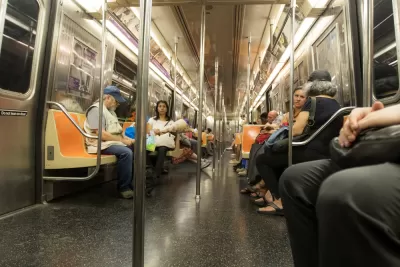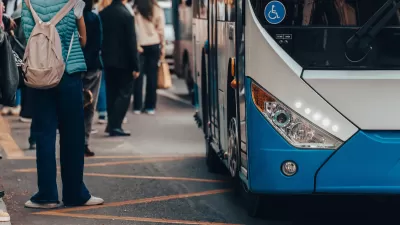Some of the country’s largest public transit systems are scrambling to find new sources of revenue as emergency aid dollars dry up, but some stakeholders don’t see their value.

Some of the nation’s largest public transit systems are still struggling to maintain operations and address massive budget gaps that only widened as the Covid-19 pandemic changed commuting and travel patterns.
Now, Ry Rivard explains in Politico, “historic tensions between urban needs and suburban wants are colliding, as fixes for transit systems depend on approval from elected officials — and their voters — who live outside the central business districts most transportation systems were designed to serve.”
Ultimately, public transit systems are just that: public. Most require some level of subsidies to keep fares affordable and service effective for the people who need it most. As Rivard explains, transit systems spend more money the farther out to suburban areas they go, because they spend more time and resources on fewer riders. “That creates an almost inevitable conflict between urban transit and everyone else. Either the mass transit network serves people outside the city and loses more money and needs more subsidies — or it doesn’t and therefore doesn’t do anything to garner their support.”
Using examples from New York City, Washington, D.C., and Philadelphia, Rivard describes the efforts some agencies are making to create new revenue streams and create more sustainable funding sources. So far, none have established a long-term fix.
FULL STORY: Suburban backlash threatens country’s biggest transit systems

Planetizen Federal Action Tracker
A weekly monitor of how Trump’s orders and actions are impacting planners and planning in America.

Congressman Proposes Bill to Rename DC Metro “Trump Train”
The Make Autorail Great Again Act would withhold federal funding to the system until the Washington Metropolitan Area Transit Authority (WMATA), rebrands as the Washington Metropolitan Authority for Greater Access (WMAGA).

The Simple Legislative Tool Transforming Vacant Downtowns
In California, Michigan and Georgia, an easy win is bringing dollars — and delight — back to city centers.

The States Losing Rural Delivery Rooms at an Alarming Pace
In some states, as few as 9% of rural hospitals still deliver babies. As a result, rising pre-term births, no adequate pre-term care and "harrowing" close calls are a growing reality.

The Small South Asian Republic Going all in on EVs
Thanks to one simple policy change less than five years ago, 65% of new cars in this Himalayan country are now electric.

DC Backpedals on Bike Lane Protection, Swaps Barriers for Paint
Citing aesthetic concerns, the city is removing the concrete barriers and flexposts that once separated Arizona Avenue cyclists from motor vehicles.
Urban Design for Planners 1: Software Tools
This six-course series explores essential urban design concepts using open source software and equips planners with the tools they need to participate fully in the urban design process.
Planning for Universal Design
Learn the tools for implementing Universal Design in planning regulations.
Smith Gee Studio
City of Charlotte
City of Camden Redevelopment Agency
City of Astoria
Transportation Research & Education Center (TREC) at Portland State University
US High Speed Rail Association
City of Camden Redevelopment Agency
Municipality of Princeton (NJ)





























